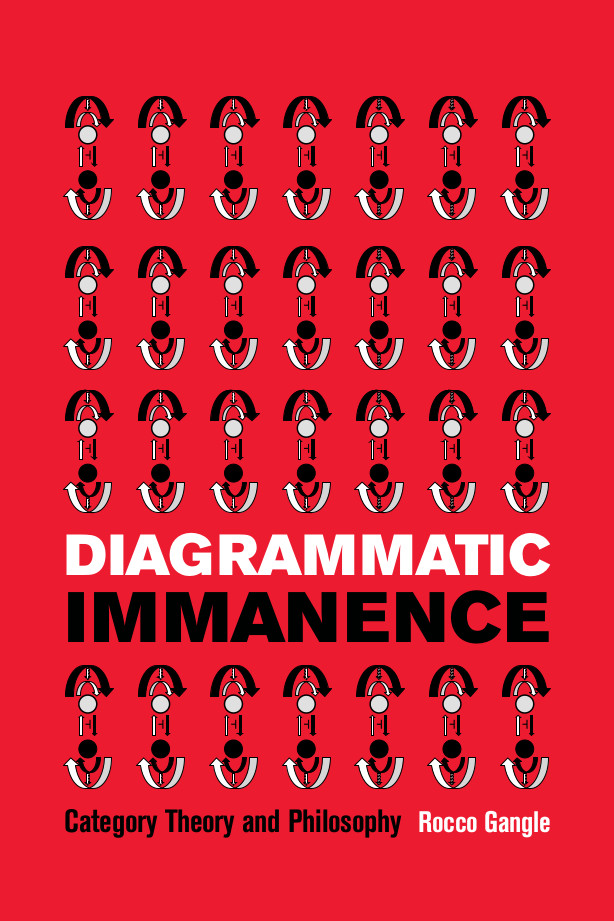Matteo Pasquinelli (ed.): Gli algoritmi del capitale. Accelerazionismo, macchine della conoscenza e autonomia del comune (2014) [Italian]
Filed under book | Tags: · accelerationism, algorithm, capitalism, philosophy, politics, theory

“L’immaginario politico e l’idea di futuro sembrano oggi cancellati dall’imperativo dell’austerity. Ma quale sarebbe il vero passaggio rivoluzionario, si chiedevano un tempo Deleuze e Guattari: ritirarsi dal mercato globale o, al contrario, andare ancora più lontano, “accelerare il processo”? L’economia è in crisi, ma la tecnologia continua a evolvere sotto i nostri occhi: i social network sono sempre più pervasivi, la logistica delle merci sempre più veloce e digitalizzata, servizi segreti e finanza usano algoritmi sempre più sofisticati per analizzare e prevedere i comportamenti di massa. E se l’impasse politica fosse legata all’incapacità di comprendere le nuove astrazioni del capitale e del lavoro, gli algoritmi che controllano le relazioni sociali tanto quanto il tempo collettivo congelato dalla finanza in futures e derivati? Un nuovo nomos tecnologico sembra prendere forma a livello planetario, dove i poteri tradizionali degli Stati nazione si intrecciano con le grandi corporation della rete. Un ex direttore della Cia lo ha riassunto in modo cinico ma efficace: “Uccidiamo persone sulla base dei metadati”. Rispondendo al recente Manifesto accelerazionista e rilanciando la tesi del capitalismo cognitivo, gli autori del presente libro sostengono che lo sviluppo tecnologico possa essere ridisegnato in senso rivoluzionario, che l’astrazione più estrema dell’intelligenza debba diventare arma politica e che il futuro sia da riconquistare come terreno visionario.”
Contributors: Alex Williams & Nick Srnicek, Antonio Negri, Franco “Bifo” Berardi, Matteo Pasquinelli, Nick Dyer-Witheford, Mercedes Bunz, Stefano Harney, Tiziana Terranova, Carlo Vercellone, and Christian Marazzi.
Publisher Ombrecorte, Verona, 2014
ISBN 9788897522829
187 pages
Reviews: Andrea Fumagalli (Il manifesto, 2014), Valerio Mattioli (Prismo, 2015), Elettra Stimilli (Alfabeta2, 2015).
Comment (0)October, 155: A Questionnaire on Materialisms (2016)
Filed under survey | Tags: · actor-network theory, anthropocene, art, human, materialism, networks, object-oriented ontology, philosophy, speculative realism, subject, subjectivity, thing
“Recent philosophical tendencies of “Actor-Network Theory,” “Thing Theory,” “Object-Oriented Ontology,” “Speculative Realism,”and “Vibrant Materialism,” have profoundly challenged the centrality of subjectivity in the humanities and, arguably, the perspectives that theories of the subject from the psychoanalytic to the Foucauldian have afforded (on the operations of power, the production of difference, and the constitution of the social, for instance). At least four moves characterize these discourses:
• Attempting to think the reality of objects beyond human meanings and uses. This other reality is often rooted in “thingness” or an animate materiality.
• Asserting that humans and objects form networks or assemblages across which agency and even consciousness are distributed.
• Shifting from epistemology, in all of its relation to critique, to ontology, where the being of things is valued alongside that of persons.
• Situating modernity in geological time with the concept of the “Anthropocene,” an era defined by the destructive ecological effects of human industry.
Many artists and curators, particularly in the UK, Germany, and the United States, appear deeply influenced by this shift. Is it possible, or desirable, to decenter the human in discourse on art in particular? What is gained in the attempt, and what—or who—disappears from view? Is human difference—gender, race, power of all kinds—elided? What are the risks in assigning agency to objects; does it absolve us of responsibility, or offer a new platform for politics?” (from the introduction)
Responses by Emily Apter, Ed Atkins, Armen Avanessian, Bill Brown, Giuliana Bruno, Julia Bryan-Wilson, D. Graham Burnett, Mel Y. Chen, Andrew Cole, Christoph Cox, Suhail Malik, T. J. Demos, Jeff Dolven, David T. Doris, Helmut Draxler, Patricia Falguières, Peter Galison, Alexander R. Galloway, Rachel Haidu, Graham Harman, Camille Henrot, Brooke Holmes, Tim Ingold, Caroline A. Jones, Alex Kitnick, Sam Lewitt, Helen Molesworth, Alexander Nemerov, Michael Newman, Spyros Papapetros, Susanne Pfeffer, Gregor Quack, Charles Ray, Matthew Ritchie, André Rottmann, Amie Siegel, Kerstin Stakemeier, Artie Vierkant, McKenzie Wark, Eyal Weizman, Christopher S. Wood, and Zhang Ga.
Edited by David Joselit, Carrie Lambert-Beatty, and Hal Foster
Publisher MIT Press, Winter 2016
ISSN 0162-2870
108 pages
PDF (updated on 2017-11-24)
Comment (0)Rocco Gangle: Diagrammatic Immanence: Category Theory and Philosophy (2015)
Filed under book | Tags: · category theory, diagram, graph, immanence, mathematics, metaphysics, philosophy, semiotics

“A renewal of immanent metaphysics through diagrammatic methods and the tools of category theory.
Spinoza, Peirce and Deleuze are, in different ways, philosophers of immanence. Rocco Gangle addresses the methodological questions raised by a commitment to immanence in terms of how diagrams may be used both as tools and as objects of philosophical investigation. He integrates insights from Spinozist metaphysics, Peircean semiotics and Deleuze’s philosophy of difference in conjunction with the formal operations of category theory.
Category theory reveals deep structural connections among logic, topology and a variety of different areas of mathematics, and it provides constructive and rigorous concepts for investigating how diagrams work. Gangle introduces the methods of category theory from a philosophical and diagrammatic perspective, allowing philosophers with little or no mathematical training to come to grips with this important field.
This coordination of immanent metaphysics, diagrammatic method and category theoretical mathematics opens a new horizon for contemporary thought.”
Publisher Edinburgh University Press, 2015
ISBN 1474404170, 9781474404174
256 pages
via wX
PDF, PDF (updated on 2016-11-20)
Comments (2)
